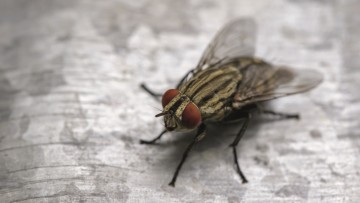House Fly [Musca domestica]
A combination of environmental, procedural, mechanical, and chemical tactics will provide effective and long-term relief from adult flies.



Damages caused / challenges
- Expanding populations of flies can spread from their breeding grounds into other locations, such as homes and restaurants
- In food establishments, the presence of adult flies may be equated with poor sanitary conditions
- Breeding sites and access points can be easy to overlook
- Flies can serve as mechanical vectors to many pathogens
Profile
| Scientific name | Musca domestica/ muscidae |
| Environment | Typically, sources of decay and waste, animal housing |
| Diversity | Other common fly species include the fruit fly, bluebottle fly, autumn fly |
| Reproduction | Females can lay up to 500 eggs in their lifetime and the life cycle of flies can be complete in 7-10 days Breeding increases in warm weather |
| Diet | Moist, decaying organic matter |
| Predators | Larger insects, spiders, birds, reptiles etc. |
How to control
Fly management
Effective and integrated fly control requires pest control managers to undertake four key tasks:
1. Identify the fly species to be targetted
2. Prevent flies from accessing indoor premises and facilities
3. Locate, remove or treat breeding media
4. Use insecticides
Pinpointing the problem
Detailed knowledge of the different species’ diet ensures that the correct solutions and procedures will be applied. For instance, animal waste and rubbish will attract house flies, whereas bluebottle flies can infest a meat processing facility.
Blocking access
Screening doors, installing curtains, sealing cracks and crevices in walls are some of the measures that can be taken to physically prevent flies from entering indoor facilities and premises. Deprived of breeding media, the flies cannot reproduce.
Breeding media
Breeding media is found in bins and recycling receptacles but also on floors, walls and near drains. Once located, the areas affected need to be treated. Expert advice on how to thoroughly clean the premises is crucial in the success of the programme. This includes recommendations on how often bins are emptied and sanitised, the need to clean premises more frequently in warm weather, the location of wheelie bins in relation to entrances and so on.
Insecticides
When combined with the other fly management strategies, insecticides are useful in controlling the number of egg-laying adult flies, which interrupts the cycle of reproduction. The visible signs of fly infestation disappear when insecticides are used, which is an important consideration for catering outlets.

